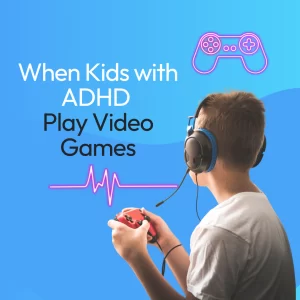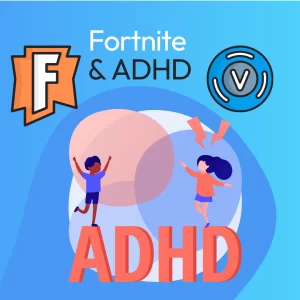Approximately one third of American youth have been bullied, and the vast majority of bullying occurs on school grounds. It’s safe to say that this is an epidemic, and one that has not been effectively tamed in the last few decades.
How Do We Stop Bullying?
Zero Tolerance
Schools are meant to be a safe haven for children, an educational oasis where they should be free from hunger, fear, and bullies. Most schools now have a zero-tolerance bullying policy. According to the Department of Education, a zero tolerance policy is one that “results in mandatory expulsion of any student who commits one or more specified offenses.”
However, the Association of American Educators argues that zero-tolerance policies may not be effective. In fact, these policies ma cause more harm than good because they do not allow for crucial nuances to affect punishment and disproportionately affect children of color. The American Psychological Association has supported this claim since 2008.
Kindness Is Key
Zero tolerance policies aren’t working. But kindness may be able to.
Skeptics may scoff at this, saying “kindness can’t be taught!” But they would be wrong. Kindness is a teachable habit that has the potential to completely alter school culture. Here’s how:
Ending Bullying With Kindness
The Science of Kindness
You may have heard of oxytocin referred to as the “love hormone” because it is released during hugs. According to Medical News Today, it also “impacts bonding behavior, the creation of group memories, social recognition, and other social functions.” Acts of kindness release oxytocin, along with dopamine and serotonin–all feel-good chemicals.
But these emotional boosts only last a few minutes. In order to reap more permanent benefits of kindness, altruistic acts have to be repeated. When you teach school kids to be kind, they learn to recognize the positive emotional benefits of kindness, and naturally want to repeat the process.
How To Teach Kindness
According to neuroscience expert Dr. Patty O’Grady, “Kindness changes the brain by the experience of kindness. Children and adolescents do not learn kindness by only thinking about it and talking about it. Kindness is best learned by feeling it so that they can reproduce it.”
The science is clear on why teaching kindness matters. However, deciding how to teach kindness is more subjective. Here are some tried and true ways that educators use to teach their students to be considerate.
- Mindfulness: Mindfulness has many definitions, and can mean different things to different people. In general, it is the habit of being aware and present in the moment. Mindfulness is being aware of our actions and how they make us and others feel. Mindfulness can be taught to students, even young ones! There are lots of age-appropriate techniques for teaching kids to be more emotionally aware.
- Social Emotional Learning: Social Emotional Learning, or SEL for short, is when students learn about their emotions and how their actions affect others through empathy, set positive goals, and create healthy relationships with others. SEL focuses on fostering collaboration, responsibility and compassion in children. To encourage SEL, teachers engage with students by asking empathetic, open-ended questions and focus on cooperation and healthy conflict resolution.
- Celebrate Kindness: There are nearly endless ways to celebrate kindness. Have your class write compliment cards once a month to their fellow students. Celebrate random acts of kindness by praising children who show selfless behavior. Have your students write weekly thank-you cards to someone in their life that they appreciate. Create bulletin boards that provide students with examples of kindness. Get creative!
- Model Kindness: Of course, one of the best ways to teach kindness is to model it. Always treat others with compassion and consideration. Have respectful, empathetic conversations with students. When you model or express an emotion, name and explain it to your students. Depending on school rules, you can even bring your classroom to service activities!
The Results of Kindness
Once you implement teaching kindness in the classroom, you will see positive results in all aspects of school culture–not just related to bullying! Because kind acts release hormones like oxytocin, dopamine, and serotonin, they help create stronger bonds between students and encourage more acts of compassion.
Kindness encourages a strong sense of community and belonging while boosting students’ self-esteem. This is a result of the “helper’s high” that oxytocin, dopamine, and serotonin give us after we help others. Kids feel good about themselves when they help others, and are more accepted by their peers. This combo of self-acceptance and peer-acceptance improves childrens’ happiness and sense of community.
Kindness can have physical benefits, too. The hormones released after a good deed lower stress and boost happiness, which is good for the heart and blood pressure, while reducing the aging process.
Plus, increased serotonin levels can help students with learning, memory, mood, sleep, health, and digestion–all which mean better concentration in the classroom.
Kindness and Reducing Bullying
Integrating kindness in schools can have drastic effects on bullying levels. When we teach children to be mindful of their thoughts and actions, we encourage them to behave compassionately. Such positive behavior is naturally rewarded through peer-acceptance, friendship, and strong community bonds. Kindness is the opposite of bullying. When kindness because a habit and even a culture in your classroom, bullying will diminish.
Though they have been implemented in schools for decades, zero-tolerance bullying policies just aren’t working. Bullying is still widespread throughout schools, and it’s hurting our kids. According to the CDC, students who experience bullying are at increased risk for poor school adjustment, sleep difficulties, anxiety, and depression.
But all hope is not lost. Anti-bullying programs in schools can decrease bullying by up to 25%. Teaching kindness to our students is an effective, positive way to stop bullying in schools and make kids happier, healthier, and safer.




1 thought on “Secret to Ending Bullying in School: Teaching Kindness”
Pingback: Story of Kindness: Free Haircuts! - Kindness - Kindness in our communities